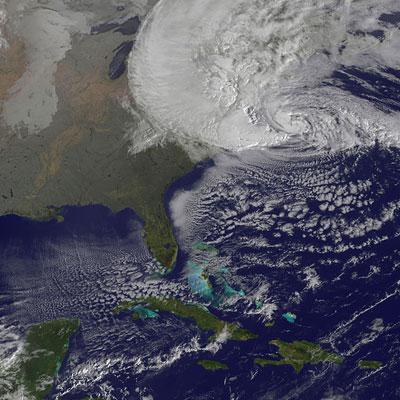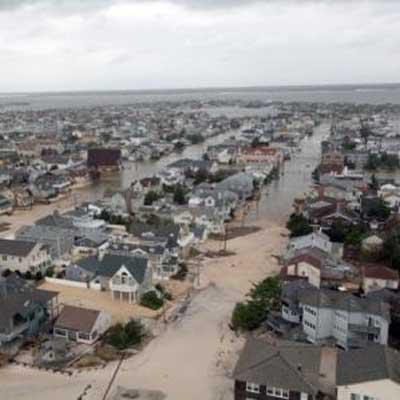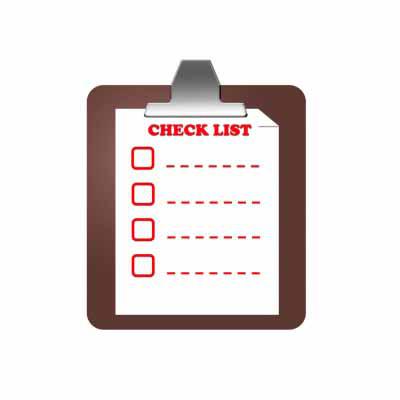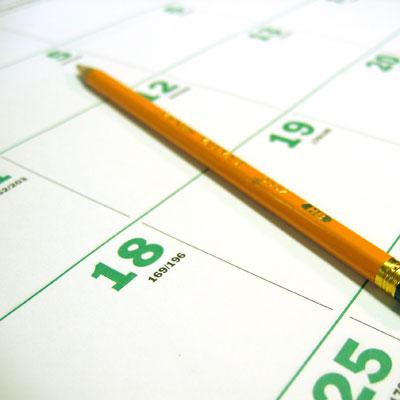Tips For Disaster Preparedness And Business Continuity When The 'Unexpected' Strikes

Expect The Unexpected
Today marks the one-year anniversary of the devastation brought on by Hurricane Sandy last Oct. 29. Many, including homeowners and businesses, were unprepared for the damage, destruction and loss brought on by this natural disaster.
Although there is not one disaster recovery solution, David Van Allen, vice president of operations at Allentown, Pa.-based INetU, believes businesses must take steps to prepare for the unexpected and create a business continuity plan. Read on to find out how to plan, practice and create the necessary checklist in keeping your business ready for the unexpected.

Define Disaster And Plan For The Expected
Since there isn't one single solution for dealing with disaster recovery, preparedness and business continuity, businesses struggle trying to prepare, said Van Allen.
"I think that people in business sometimes try to plan for the worst and they actually underprepare as a result," said Van Allen.
Although natural disasters like earthquakes and hurricanes are inevitable, Van Allen believes businesses cannot prepare for the worst. Instead, they must take a simpler approach and plan for the effects of any event, he said.
"I'd like to get people to think more about what is expected to happen rather than the unexpected or the cataclysmic," said Van Allen. "A disaster is anything that causes business to cease functioning in a manner or fashion that results in significant loss. If you break it down into individual components, you can plan for it."

Put Technology Aside For A Minute
"It may be strange coming from a company that deals with providing businesses technology, but remember technology enables humans to do business with other human beings," said Van Allen.
The first thing Van Allen recommends is to look at the people and nontechnological aspects of business.
"How are nontechnical aspects going to exist and operate if something were to happen?" asks Van Allen. "I always say, 'Just look at it for a few days, not months. Start there and very simply.'"

Create A Consequence-Based Plan With Real Scenarios
Whether an area is prone to tornadoes or earthquakes, prepare by being realistic for the area that the business is located in, said Van Allen.
"Create a list of things that are important within the first few hours, and make another list of things that will be important later on," said Van Allen.

Use A Checklist
Van Allen recommends creating a checklist and to ask yourself the following questions and what you need to do in the first 15 minutes of a disaster.
- Are we safe from harm?
- Do we know what is happening?
- Who is my first call to?
- Who do I need to call?
- What if I can't use conventional systems to make a call?
- What if I can't get access to my building?
- What do we do if we have to evacuate? Who goes where?
- Is there a location that can be used for a temporary operations site?
- Can you make a mutual deal with another business owner a few miles away?
- Which employees are key decision-makers?
- What is my plan to bring in additional people to help run the business?
- What contracts, compliances or laws might I breach during this situation?

Communicating With Employees
In the event of a disaster, communication is key. To prepare, Van Allen suggests creating a meeting point for employees.
"Think of the first step you have with your family if everybody has to get out of the house," said Van Allen. "We would be going to a predetermined meeting point and add technology after; don't sweat the big stuff first."
Building an alternative system to use for independent communication is imperative in keeping contact with employees. Whether it is email or multimedia messaging, businesses must figure out how to move that out of the area and set it up, said Van Allen.

Communicating With Clients And Customers
During a disaster, how can you reach out to your customers, asks Van Allen. It may be vital to keep a website up and running to inform customers.
"Your website is how you communicate; it's essential my website stays up," said Van Allen. "If I have something in there that my customers could get to the important stuff, I'd be able to inform my clients and maintain some sort of revenue flow."

Technology Planning And Business-Critical Functions
Talk to somebody that can help with technology planning, whether it is a hosting provider, IT staff, data center or the people who are trusted to come up with ways to duplicate services, said Van Allen.
"By helping them understand what is important to move, and what is not important, we are creating business continuity plans they can test, work with and rely on," said Van Allen. "Identifying business-critical functions, such as accounting, billing, ERP systems, is also crucial. Basic systems or processes must be restored to keep a business functioning."

Incorporate A Human Element
When focusing on a perilous business procedure, it is easy to overlook your utmost assets, so think about your employees and their families, said Van Allen.
Is there a plan to bring and shelter employees' spouses, children and pets? If there are employees necessary to work around the clock, there is a lot to consider. Sometimes the bond of the family outweighs the needs of a business, said Van Allen.

Fail-Over Strategy
Create a fail-over strategy to help with switching your main systems to your backup systems.
"The term 'fail over 'is used to describe 'the process of switching from your main systems to your backup systems,' said Van Allen. "Are you willing to put aside a day, every year, to simulate and activate your plan, and, yes, fail over to all of the secondary systems?"

Create 'Business Continuity Day'
After creating a business continuity model and plan, forgetting about it won't allow a business to work optimally, said Van Allen.
"The final thing to do is completely forget about it and never remember it again -- I'm being sarcastic," said Van Allen. "But a lot of cases will create some sort of business continuity model, test it one time and forget about it."
Like a holiday, create a day called Business Continuity Day so a business is well prepared, said Van Allen.
"Pick a day once a year, where Business Continuity Day is set aside so your whole business can activate the business continuity plan," said Van Allen. "They can fail over to the systems they would use should something go wrong and test that ebb and flow. Then you are well prepared for when the unexpected springs the expected on you."